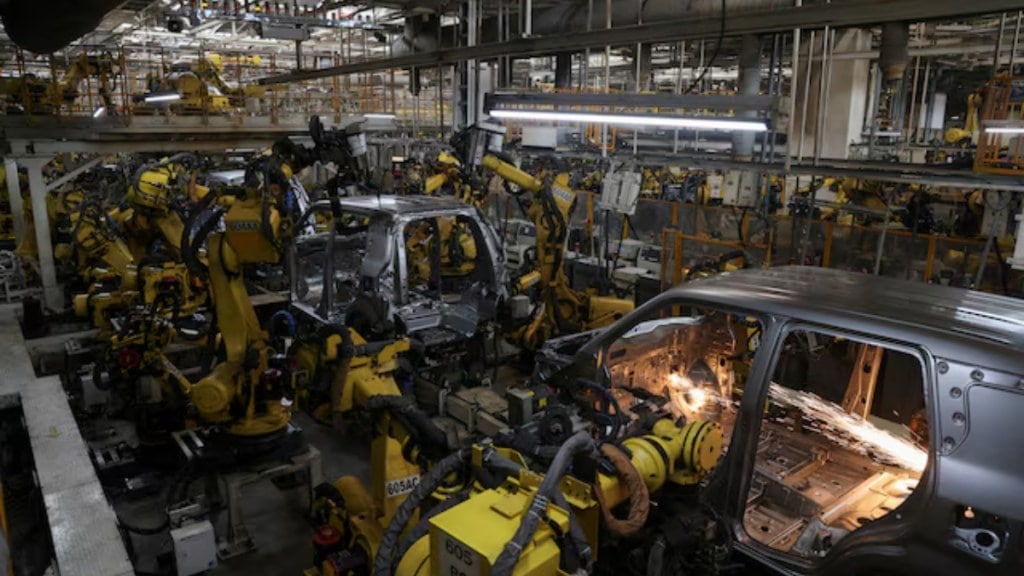The Indian automotive industry, already navigating a tightrope of global supply chain volatility, is now staring at a potentially far more disruptive challenge: a severe shortage of rare earth elements (REEs) crucial for manufacturing components across electric, hybrid, and even traditional internal combustion engine (ICE) vehicles. India relies heavily on Chinese REE imports and is now facing potential production curtailment across the automotive sector with the gradual depletion of older inventory.
This comes just as the industry was catching its breath after the semiconductor shortages and disruptions caused by the pandemic.
What’s Happening?
On April 4, 2025, Beijing declared that seven specific REEs—Neodymium, Dysprosium, Terbium, Samarium, Gadolinium, Praseodymium, and Cerium—now required special licenses, end-user certificates, and government-to-government approvals for export.
Starting July 2025, delays in REE shipments could disrupt production of electric, hybrid, and internal combustion engine (ICE) vehicles by Indian auto OEMs, especially premium models that rely heavily on REE-based components. CareEdge Ratings said, “Automakers might need to shift focus to mid-range or base models to address supply disruption.”
The move is being widely interpreted as a strategic counter to increased US tariffs. However, the United States, according to President Donald Trump’s post on Truth Social, will start receiving ‘full magnets, and any necessary rare earths’. On Wednesday, he confirmed that the US has reached an agreement with China, ‘pending final approval’ between President Xi and him. “In return, we’ll fulfill our commitments, including allowing Chinese students to study at our colleges and universities—which I’ve always supported. We’re imposing a total of 55% in tariffs, while China’s tariffs will be 10%. Our relationship is strong. Thanks for paying attention!” he added.
CareEdge Ratings pinned hopes on China’s recent decision to temporarily allow REE exports to top US automakers while maintaining that this offers hope for resolving the impasse for Indian companies as well.
A repeat show?
Interestingly, it’s not the first time China has used this as a geopolitical tool against the world. China did the same in 2010 and the World Trade Organization (WTO) had to step in, forcing the Asian country to drop quotas and duties by 2015. The current situation mirrors the 2010 strategy, albeit in a more structured, legally framed manner. China controls 70 per cent of global REE production and 90 per cent of processing. India’s import dependency on China for rare earth permanent magnet remained as high as 90 per cent during FY24 and FY25.
FACT: Although REEs are relatively abundant in the Earth’s crust, they are rarely found in concentrations that are economically viable to extract. China’s dominance stems from decades of targeted investments, lenient environmental regulations, and state-backed industrial policies.
The impact
The restrictions imposed by China are expected to ripple across the automotive industry. To put things in perspective, REEs are essential in various automotive components, including electric motors, battery management systems, catalytic converters, infotainment systems, power steering, brake-by-wire systems, and advanced safety sensors. Now this means, the impact will not be limited to electric vehicles (EVs) but extends to ICE & hybrid models. EVs will still be most affected with the risk of recent sector growth momentum now facing a roadblock.
The revised framework which requires a series of approvals and verification processes is leading to considerable delays. As of June 2025, none of the export license applications submitted by Indian firms for REEs have been approved by China, despite sustained diplomatic efforts. This means starting July 2025, there will be potential production disruptions.
The alternatives
Higher-end vehicle variants incorporating more REE-dependent technologies will likely be affected first. In response, CareEdge said, OEMs may shift focus towards producing mid-range or base models to mitigate the impact of the supply constraints.
In the short term, the CareEdge report maintained, Indian automakers are expected to resort to importing fully assembled components and sub systems in case of a delay in obtaining licenses/approvals from China for importing REE. “While this may offer a temporary reprieve, it is likely to increase input costs due to higher import duties, logistics expenses, and currency fluctuations. This tactical shift aims to maintain production continuity while domestic and alternative sourcing strategies are being developed,” it said.
CareEdge Ratings believes that the government’s proactive engagement, combined with industry adaptability, is expected to ensure continuity in the long term. “This underscores the urgent need for a resilient and diversified supply chain, supported by domestic capability building and global partnerships,” it said.
Indian stakeholders are actively advocating for diplomatic engagement with China to expedite pending approvals, streamline licensing procedures and ensure the uninterrupted flow of critical components. Earlier in May, Society of Indian Automobile Manufacturers (SIAM) had requested the Ministry of Heavy Industries (MHI) to engage with the Chinese government via the Ministry of External Affairs (MEA) to grant a six-month approval to a specific Chinese exporter to ship the same rare earth materials to the same Indian importer.
CareEdge said, “The government is considering commercialising magnet manufacturing technologies currently held by select public sector entities as an immediate contingency measure. Simultaneously, efforts are underway to formalise alternative supply chains for REEs, with potential sourcing from countries such as Vietnam, Australia and the US.” However, these alternative sources lack the processing capacity to meet global demand soon.
India must also accelerate the development of a domestic REE supply chain, which includes exploring REE-rich regions, incentivising private sector participation in mining and processing, investing in R&D for alternative technologies, and forging global partnerships.
To conclude…
India’s rare earth element crisis is not merely a supply chain disruption but a strategic wake-up call. “This crisis underscores the perils of over-dependence on a single geopolitical actor for critical inputs. The path to resilience lies in building a full-spectrum domestic REE ecosystem. Strategic reserves, public-private R&D, and global partnerships must converge into a coherent national strategy,” said Madhusudhan Goswami, Assistant Director, CareEdge Ratings.
